While autumn provides exquisite landscapes, it also puts photographers to the test. The scenery changes every hour or day, and the weather is much more unpredictable. Furthermore, the days are shorter, and it’s harder to get to remote locations and catch good light. Autumn landscapes have a different color palette, and it may be more challenging to create the atmosphere you want. Last but not least, there are so many fall photographs out there that one can easily struggle to come up with something new. So how can you benefit from autumn landscapes and create authentic photographs? Here are some tips to get you started.
Work with Analogous Colors
Autumn comes with its own color palette. You have many shades of yellow, orange, red, and brown, and fewer greens. The colors are less saturated. You also have intense blue skies and plenty of gray, dull skies. And although the fall colors work marvelous for a romantic, nostalgic, or sad atmosphere, they might not work so well for a fresh and young atmosphere.
However, when you fill the frame with analogous colors, you dictate the mood of your pictures. The viewer doesn’t get to say: “this color is more beautiful than the other one.” The composition becomes a painting, and each shade gets a new role. For example, a slightly brighter shade of yellow may bring a little bit of sunshine. Analogous colors allow the viewer to focus on shapes and geometry. Therefore, it’s important to use carefully leading lines and proportions. The composition needs to be well-balanced and appealing.
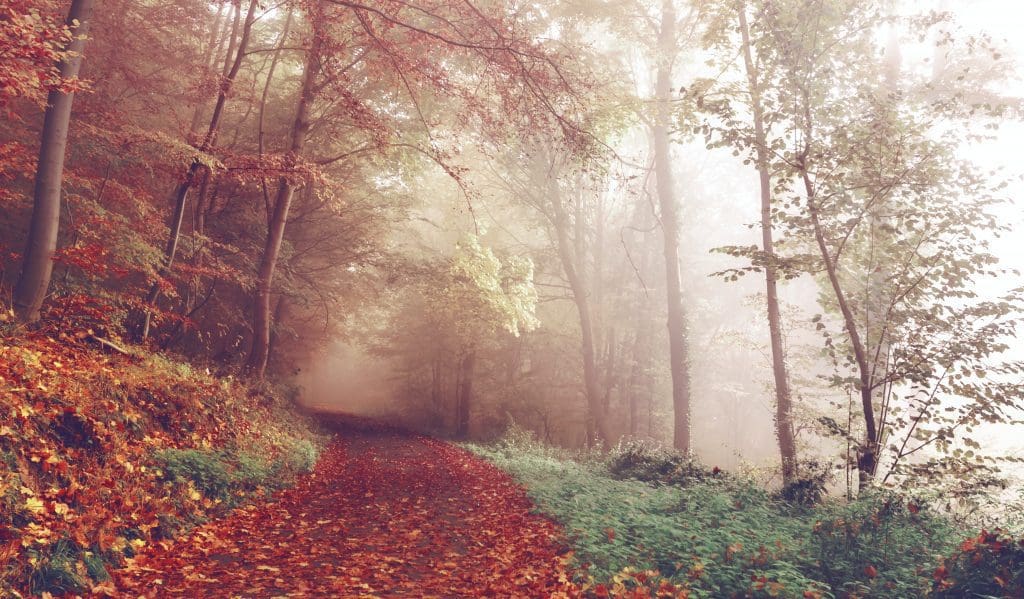
Photo by Sebastian Unrau on Unsplash
Find the Contrast that Enhances the Autumn Colors
Another method to capture the right vibe of autumn landscapes is to use negative space to create contrast. It may be a color contrast between the blue sky and golden vegetation. Or it may be a saturation contrast between a gray road or sky and the fall color palette. You may even try a texture contrast and juxtapose the detailed foliage and smooth surface of the ground, sky, or buildings.
Experiment with different types of contrast until you find the one that makes the autumn landscape stand out and impress your public.
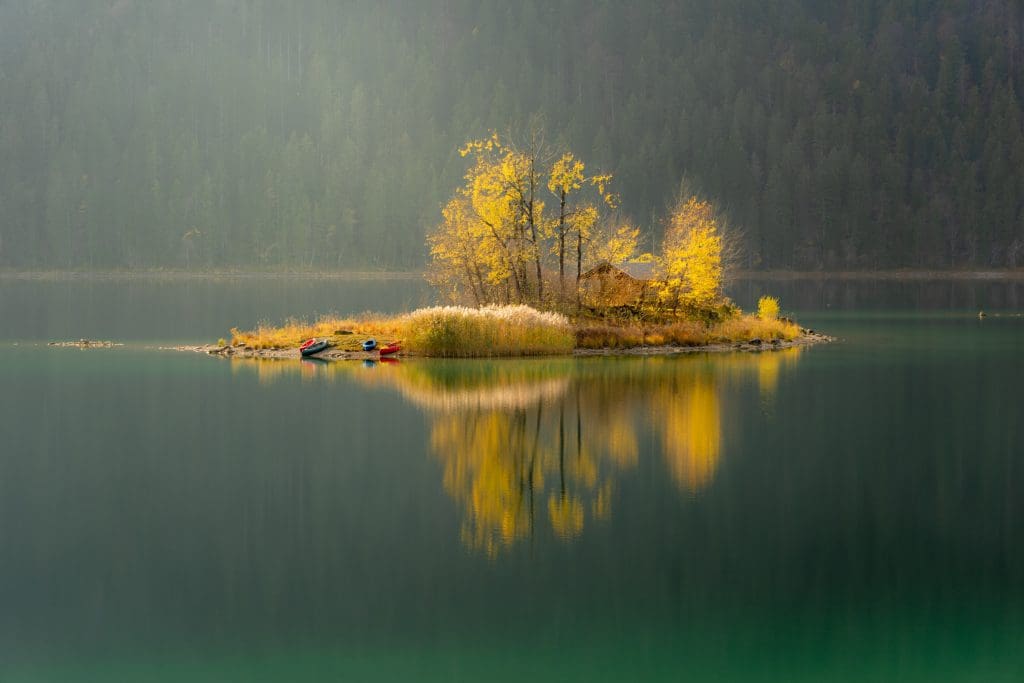
Photo by Daniel Seßler on Unsplash
Use Long Exposure to Your Advantage
Don’t let bad weather keep you away from photography. Autumn colors actually go better with rainy or overcast weather. With a dull, leaden sky, the fall colors will look more vibrant and shiny. Besides, when you have natural low lighting conditions, you can take amazing long exposure photos. Fog also helps, so make sure you use it to your advantage.
To find misty landscapes, grab the camera in the first hours after sunrise and look for woodlands and lakes. Mountain valleys are also good locations to spot fog before the sun burns it off.
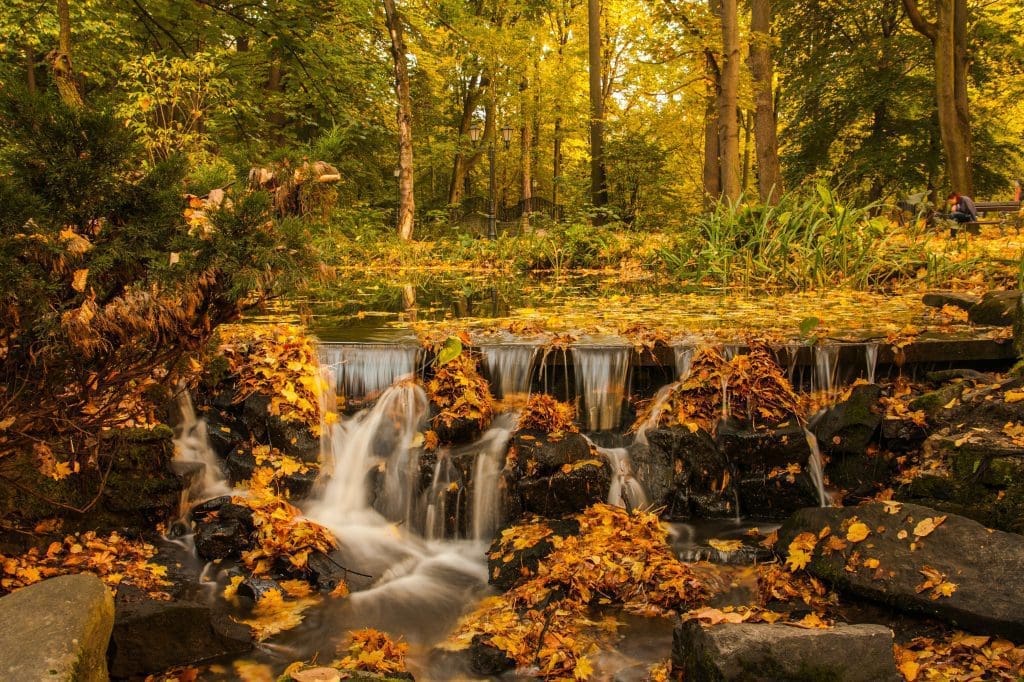
Photo by Dawid Zawiła on Unsplash
Experiment with Both Wide and Telephoto Lenses
Landscape photographers tend to use wide lenses to capture as much as possible. But fall is the season of details. A telephoto lens helps you bring closer the details of hills and mountains, reveal the colors of the foliage, and emerge the viewer into the landscape. Moreover, a telephoto lens provides a narrower depth of field and allows you to create colorful bokeh.
To stand out from the crowd, experiment with unusual angles and perspectives. Take photos from the ground level and make dry grass your main subject. Focus on a foreground object will make the autumn colors in the background look like a dream. It is exactly what you need to create an atmosphere.
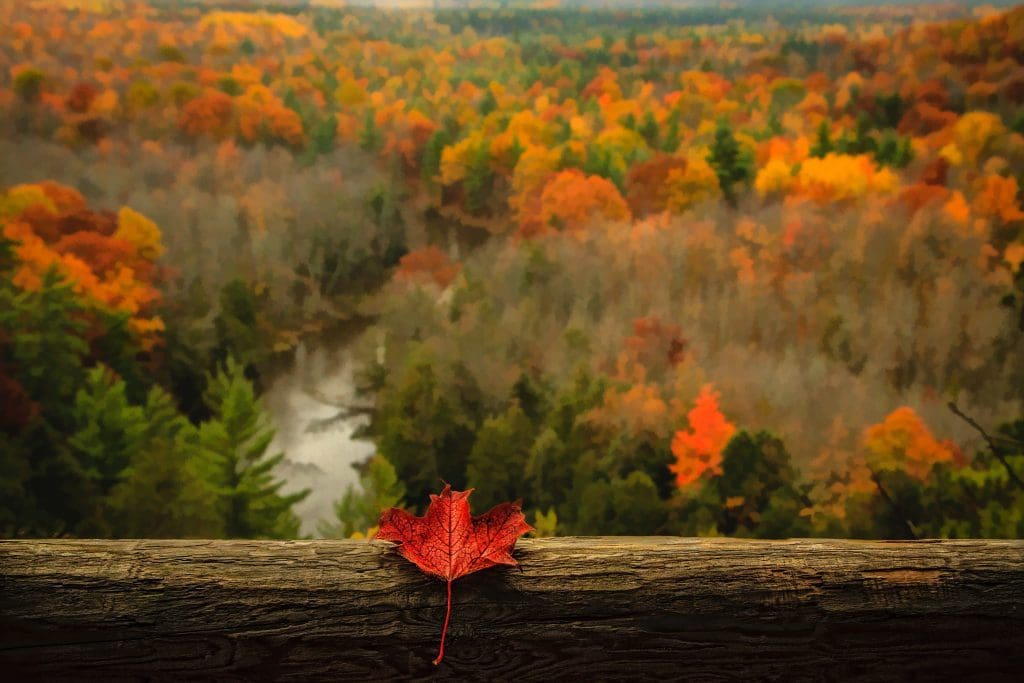
Photo by Dennis Buchner on Unsplash
Revisit a Location
Because autumn changes everything from day to day, now it’s a good time to add a temporal dimension to your visual stories. Revisit a location several times across the fall and create a photo series that documents the evolution of nature. Autumn is a season of change. It will be interesting for your public to see how the landscape goes from green summer vibes to frozen winter spikes. It will also be good practice for you.
Storytelling is a big part of photography, regardless of your subject matter. And autumn has a special way of making us feel the passing of time.
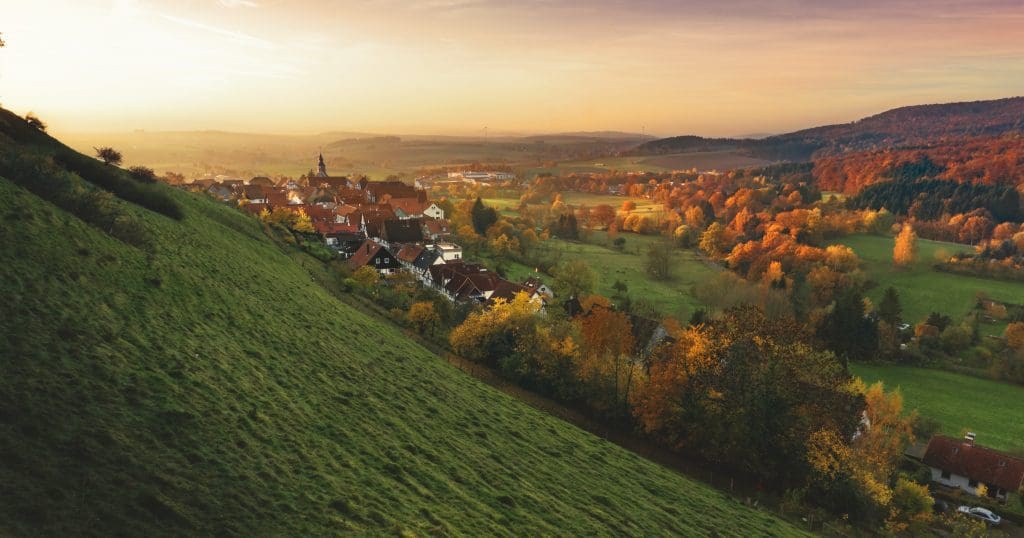
Photo by Sebastian Unrau on Unsplash
The best advice for taking great autumn landscape photos is to embrace the environment and adapt to its changes. Autumn has its pace, and you need to find its rhythm before pressing the shutter release button.
Cover photo by Dennis Buchner on Unsplash

